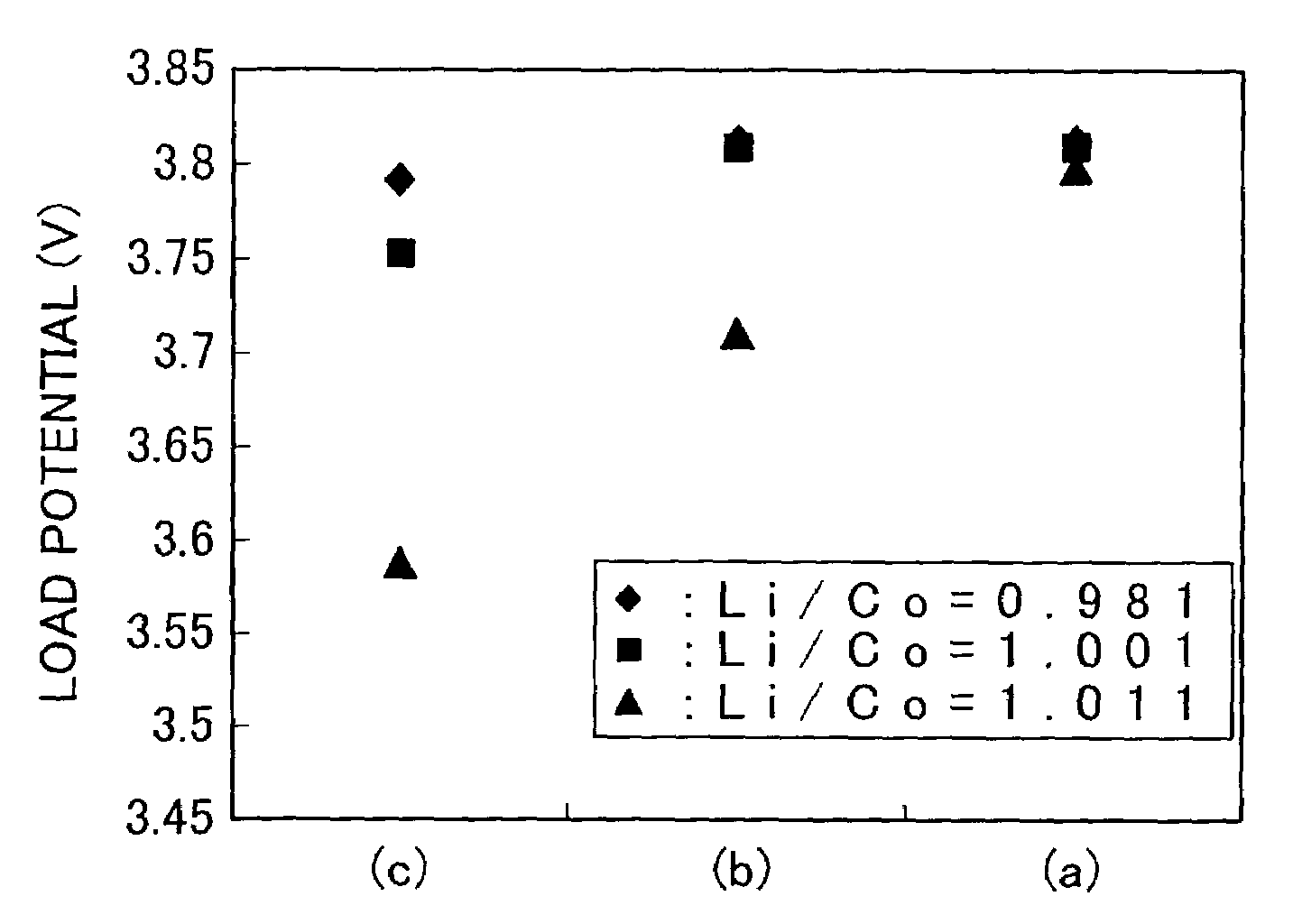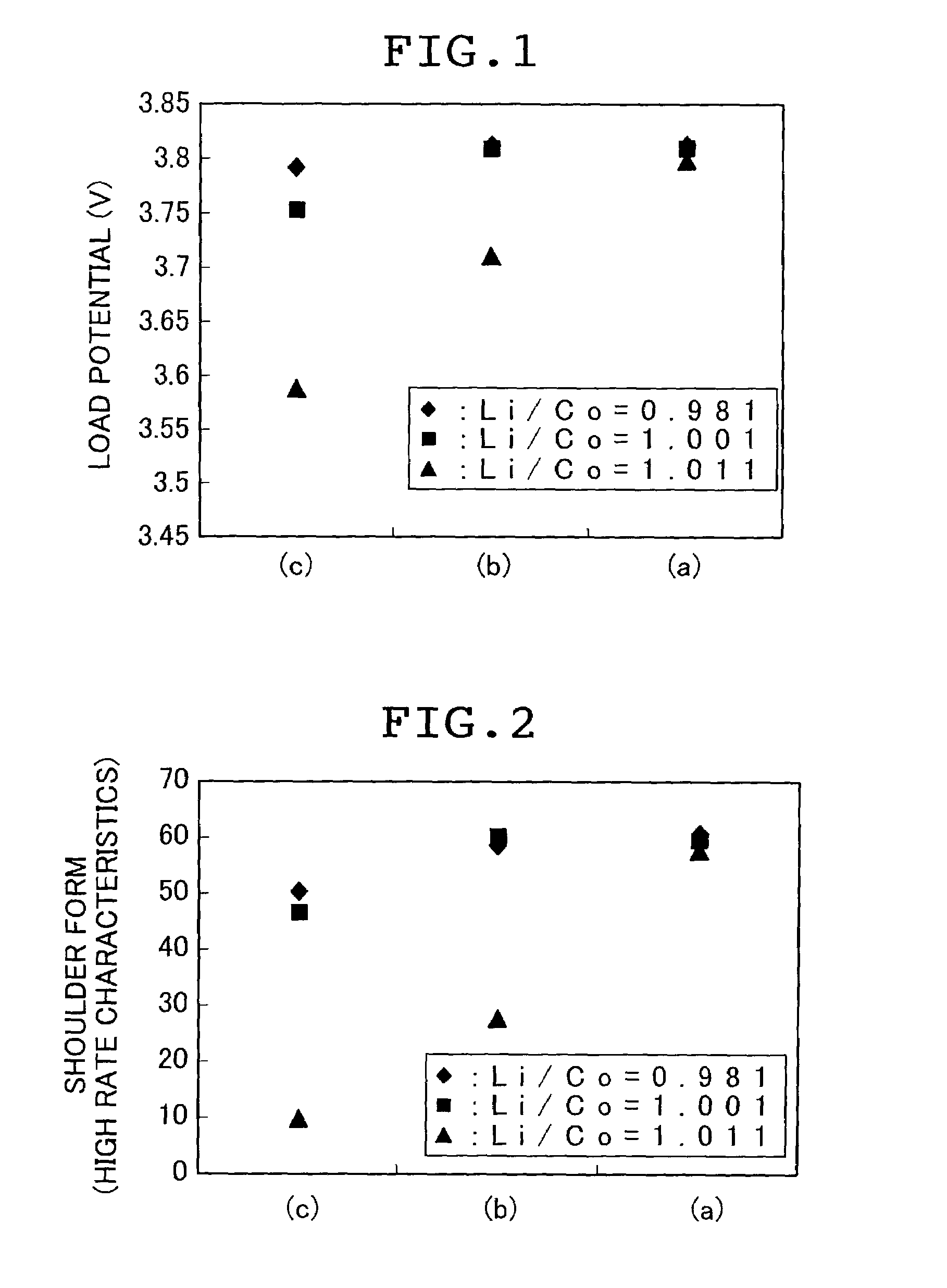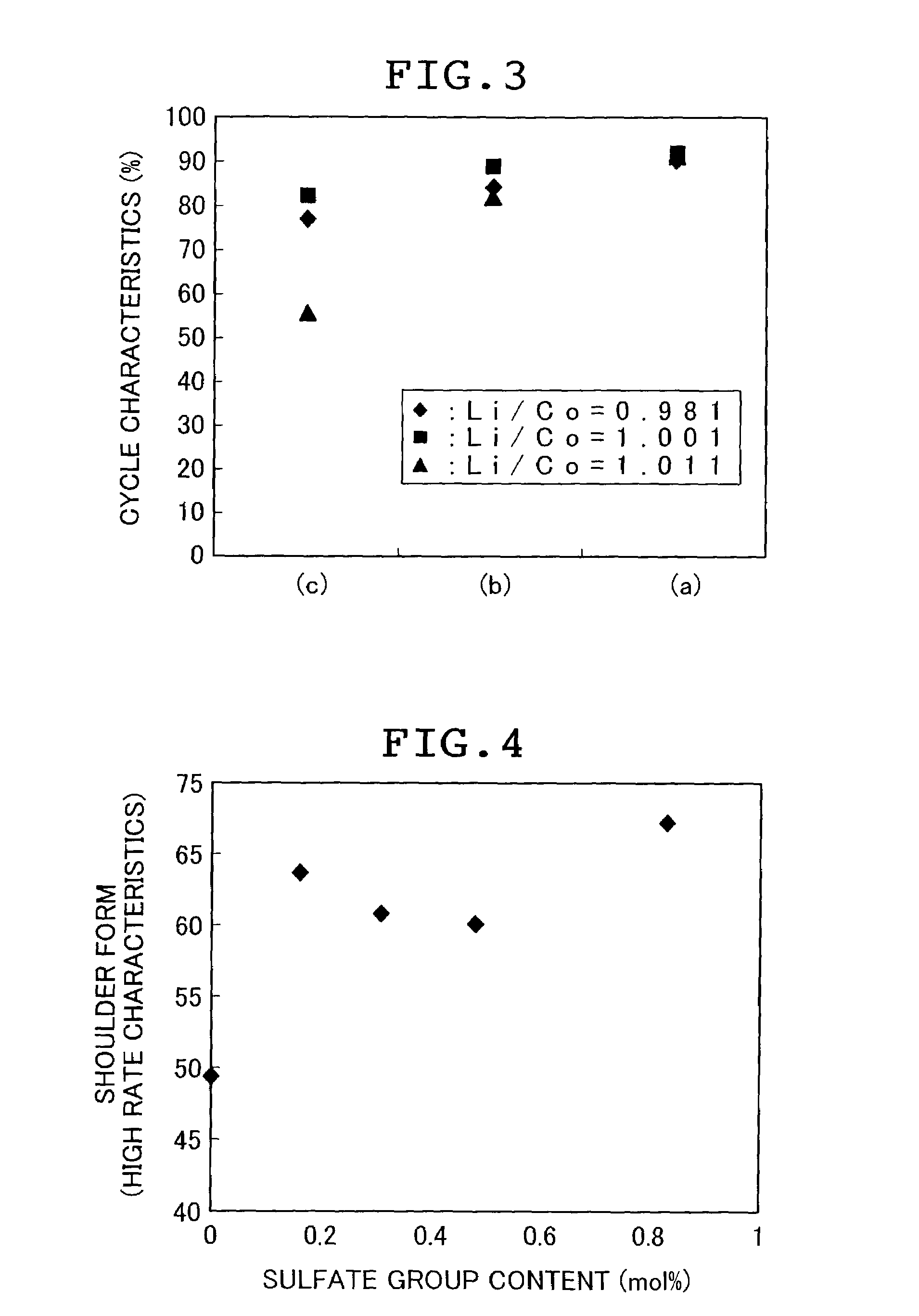Positive electrode active material for lithium ion secondary battery
a lithium ion secondary battery and active material technology, applied in the direction of vanadium compounds, cell components, nickel compounds, etc., can solve the problems of deformation of the battery casing, no technology that realizes the cycle characteristics and high rate characteristics required for mobile electronic devices, etc., to improve the cycle characteristics, improve the high rate characteristics and thermal stability of lithium ion secondary batteries, and improve the effect of battery li
- Summary
- Abstract
- Description
- Claims
- Application Information
AI Technical Summary
Benefits of technology
Problems solved by technology
Method used
Image
Examples
example 1
[0121]Litihum carbonate and tricobalt tetroxide (Co3O4) in which magnesium and calcium were contained in advance were weighed so as to have predetermined compositional ratios, mixed by dry process to obtain a raw material mixture. The raw material mixture was calcined in atmospheric gas at 900° C. After the calcination, the product was pulverized in a vibration mill and passed through a #200 sieve. On the other hand, after drying, lithium sulfate hydrate (Li2SO4.H2O) was pulverized in a vibration mill and passed through a #200 sieve. Thereafter, both the powders were mixed in a Henschel mixer and recalcined at 900° C. to obtain a positive electrode active material. The thus obtained positive electrode active material had a composition of Li1.001Co0.9997Ca0.0002Mg0.0001O2. The proportion of sulfate group was 0.713mol % based on the lithium-transition metal composite oxide.
examples 2 to 5
[0122]Litihum carbonate, tricobalt tetroxide in which magnesium and calcium were contained in advance, and lithium sulfate hydrate were weighed so as to have predetermined compositional ratios, mixed by dry process to obtain raw material mixtures. The thus obtained mixed powders were calcined in atmospheric gas at 900° C. for 10 hours to obtain positive electrode active materials having a compositional formula of Li1.00Co0.9997Ca0.0002Mg0.0001O2. These were pulverized by using a mortar.
[0123]Average particle size and proportion of sulfate group to lithium-transition metal composite oxide obtained are as follows.
[0124]Example 2: Average particle size 4.5 μm, proportion of sulfate group 0.163 mol %
[0125]Example 3: Average particle size 4.2 μm, proportion of sulfate group 0.306 mol %
[0126]Example 4: Average particle size 4.1 μm, proportion of sulfate group 0.479 mol %
[0127]Example 5: Average particle size 4.6 μm, proportion of sulfate group 0.825 mol %
example 6
[0128]Litihum carbonate, tricobalt tetroxide with which 0.06 mol % of sulfate group based on Co was mixed in advance, and zirconium oxide were metered so as to satisfy the relationships Li / (CO+Zr)=1.00, and Zr / (CO+Zr)=0.002, and mixed by dry process. The thus obtained mixed powder was calcined in atmospheric gas at 900° C. for 10 hours to obtain a positive electrode active material having a compositional formula of Li1.00Co0.998Zr0.002O2. This was pulverized by using a mortar to make an average particle size of 6.1 μm. Proportion of sulfate group was 0.051 mol % based on the lithium-transition metal composite oxide.
PUM
| Property | Measurement | Unit |
|---|---|---|
| specific surface area | aaaaa | aaaaa |
| volume based particle size | aaaaa | aaaaa |
| voltage | aaaaa | aaaaa |
Abstract
Description
Claims
Application Information
 Login to View More
Login to View More - R&D
- Intellectual Property
- Life Sciences
- Materials
- Tech Scout
- Unparalleled Data Quality
- Higher Quality Content
- 60% Fewer Hallucinations
Browse by: Latest US Patents, China's latest patents, Technical Efficacy Thesaurus, Application Domain, Technology Topic, Popular Technical Reports.
© 2025 PatSnap. All rights reserved.Legal|Privacy policy|Modern Slavery Act Transparency Statement|Sitemap|About US| Contact US: help@patsnap.com



